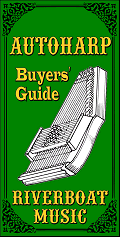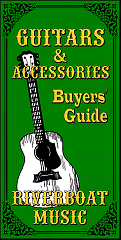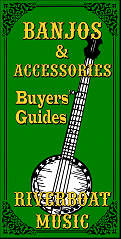
 Beginning Guitar Zither |
 |
| ||||||||||||||||||||||||||||||||||||||||||||||||||||||||||||||||||




|
Editor's Note: We are providing this article at this time because we have been trying in vain to find any book or quality web resource that tells how to play these in detail. Yes, we've see some YouTubes, and we link to a couple further down. But if you've come across ANY publication, no matter how old or inadequate, that addresses how to play these, please let me know. Also, if you play this instrument and have anything to add or correct, please use our contact page to get in touch. Thanks! We now return you to our regular article. :-) Beginning Guitar ZitherThis article is a supplement to our article "Introduction to Zithers," which provides an overview of the most popular kinds of zithers and their history. In this article, we're using the name "Guitar Zither" to identify the class of chorded zither that has a section of preformed chords and a row of melody strings. They may have anywhere between two and seven chords, and the melody strings may have diatonic or semi-chromatic scales. The photos below show two of the most common zithers of this class. These represent the kinds of guitar zithers you're mostly like to come across if you shop the used market.   Zithers like the one above left were made in the U.S. during the early 1900s, by Paramount, Oscar Schmidt and others. Zithers like the one above right were made from about 1920 to 1980 in Germany, mostly by the C. Robert Hopf company, which is still making zithers today. Generally these have survived in better condition than most US-built zithers, possibly because they're usually much newer. You'll also notice that the chord setup of guitar zithers varies from brand to brand; there's no standard. Note about "Mandolin Zithers" - a related instrument, the "mandolin zither," generally has doubled melody strings, which should technically make it sound a little more like a mandolin. But it's played the same as a guitar zither. If Your Zither has a Fretboard - another class of zithers, sometimes called "concert zithers," has a fretboard along one edge of the instrument. That's played differently, but there are lots of YouTube videos on how to play them. For More Information About Historical Zithers, click here. Reviving a Guitar ZitherTry to find a zither whose face hasn't warped or split, and whose strings aren't too rusty. Not saying that you can't rebuild or restring a badly damaged zither, but you deserve to start on one you can play without serious restoration. You can actually learn some basics on a 3-chord zither like the one on the right, though it won't have the fuller tone or range of playable keys that a 5-chord zither offers you. Keep the Strings if You Can - If you come across a zither with most or all of the strings, don't replace the strings at first. They're made like piano strings, and will last decades. Later you may decide to replace them, or you may decide to put that money toward an upgrade. For now, if you just need a few replacements, you can go to a music store whether the guitar tech has a micrometer and buy appropriate guitar strings as a temporary fix. If you have a source for the right gauge of piano wire, that's even better. Unfortunately I can't find a chart telling you what gauge you need for each string of your zither. The best you can usually do is use a good micrometer to measure the strings on either side of the missing string and choose a gauge between them. Cleaning - German autoharps generally have a thick layer of varnish, so you can use gentle cleaning products on them. US-built zithers like the brown one near the top of the page generally had a very thin finish, so you have to be especially gentle, perhaps just a damp cloth.. If the problem is just dust, a bit of felt glued to a paint stick can do the job in a hurry. More likely, things are a bit gummy. You can use a thin damp rag over a ruler or some such to get under the strings. Try not to get the cleaning product on the strings if you can avoid it. If your zither has an open grain or badly damaged finish, a guitar polish might be your best bet. Also, some zithers have unprotected paper, either the note name strips or the gingerbread circle around the sound hole. You'll need Q-tips or a similar product to clean the bits around the bridges and tuners. We have a video about cleaning a related instrument - autoharps - here. Tuning - Most zithers need tuning wrenches that are the same as those used on autoharps. If you have a piano, it might be easier to tune to that first, then use a digital tuner for fine tuning - many digital tuners will have trouble properly identifying strings that are badly out of tune. For a zither that has not been tuned in some time, you should consider wearing eye protection and expecting to break at least a string or two.. Whatever you do, don't hold it close to your face while tuning. Playing Guitar ZitherThe expectation is that you will play the chords with your left hand and play the melody strings with your right hand.
Though the chords offered vary from one zither to the next, this arrangement of each chord is almost universal. Yes, it's counter-intuitive for most string players, who are used to having the low notes closest to them. Most zither players play these strings with a pulling motion, using a fingerpick on the middle finger of their left hand.
Some people who have killer fingernails (or artificial nails) don't use the pick, but I have to, since the nails of my left hand have to be short for guitar and banjo playing. As one other alternative, some folks who like to play zither with the lower bridge up against their bellies and the instrument stretching out in front of them may find that a thumbpick on their left thumb is helpful for strumming the chords. Unfortunately, that requires a "left-handed" thumbpick which is harder to come by. After you play a chord, it will ring for several seconds, which can cause dissonance when you play the next chord. Zither players get around this by gliding the other fingers and thumb of their left hand lightly over the strings of the previous chord. They don't deaden the old cord completely, they just tone it down so it seems to fade away naturally. In videos it almost looks like they're "petting" those strings, stroking them in the opposite direction - from the high strings down to the low strings. So their left hand is continuously going back and forth, as they use their middle finger to pick one chord and glide their other fingers back over the previous chord. An Austrian zither player, Etienne de Lavaulx, explains this and other techniques in this video. If you want to practice just the left hand, you can use some simple song sheets. Try practicing these or other 3-chord songs, just strumming the strings while you sing. The more you play, and the more songs you play this way, the more natural it will become. . Right Hand - Most zither players use a flatpick to pick individual melody strings. This is the same kind of flatpick guitar or mandolin players use. A few 3-chord zithers were made with only a C scale, no sharps or flats. Those might be easier to start out on than most zithers, which include some sharps and flats. (Which sharps and flats they include varies from model to model.) As an example of a simple song, "Boil that Cabbage Down" uses only four notes in the melody  We've included another, more complicated song to try once you get the hang of that one: "Buffalo Gals."  > >
TweakingGuitar zithers were historically designed to allow you to play three chord songs in one, two, three, or possibly four keys. They weren't designed for playing more complex songs (say, adding A minor to a song in C). Some modern players, who are satisfied with playing in only one or two keys, have changed a chord or two they don't need in those keys to a chord they do. For example, if you're going to play most songs in C or G, you don't need a Bb, so why not change that chord to A minor? (Or on a German 5-chord zither, which has an A major chord, change that to A minor?)In the video we linked to above, you may have noticed that Etienne claims that the standard guitar zither tunings are "obsolete." What he means is that they don't allow him to play the complex songs he enjoys. If you belong to a zither club where everyone else has standard tunings with several major chords, that's what you probably need to bring. But if you're a soloist working out your own style, nobody with any sense is going to yell at you for tweaking your own instrument. In another video, Etienne plays a song that starts and ends in a minor key, something impossible to do on a standard Zither. Yes, the "dominant 7th chord" he hits has a dissonance, but the overall effect is haunting. No, we don't have any articles on the best way to do that, and it's probably best done by people who know something about music theory and have a particular style of music in mind. Also, you wouldn't want to change tunings in such a way that significantly more strings are raised than lowered - you'd put too much strain on the frame. But we wanted you to know it's an option you could look at a little further down the road. Other Resources
ConclusionThese suggestions are just a start, of course. But the more you play, sing, practice, and hang, the more you'll get out of it, the faster you'll learn in the future, and the better you'll be at whatever you already do have "under your belt."Other resources will be listed as I get to them.
And please stay in touch! | ||||||||||||||||||||||||||||||||||||||||||||||||||||||||||||||||||
|
All material, illustrations, and content of this web site is copyrighted ? 2001, 2002, 2003, 2004, 2005, 2006, 2007, 2008, 2009,
Note: Creek Don't Rise (tm) is Paul Race's name for his resources supporting the history and music of the North American Heartland as well as additional kinds of acoustic and traditional music. For questions, comments, suggestions, trouble reports, etc. about this page or this site, please contact us.
|
|||||||||||||||||||||||||||||||||||||||||||||||||||||||||||||||||||